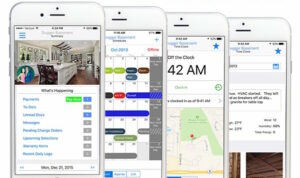Keeton Construction Services Construction Company knows that Houston commercial construction has finally caught up to the modern age as new advances in technology are implemented to streamline operations, improve communications and save time for clients. A Houston concrete contractor like all commercial construction trades has many options available nowadays to ramp up the entire build process.
Accessories and hardware that were state of the art and considered to be cutting edge are now so archaic as to be of little value. Everything is digital and must be available immediately. For example, how many people walk around wearing a pager these days? Smartphones, tablets, and laptops are the weaponry of choice for hard-charging construction professionals.
Application Technologies for Commercial Construction
 Valuable new applications have revolutionized methods of reporting, photo sharing, and look-ahead scheduling. The most successful companies have already adopted the newest technology, and they are always hungry for more ways to enjoy the benefits of computer science. The advantages of changing old methods into new habits are immediately noticeable.
Valuable new applications have revolutionized methods of reporting, photo sharing, and look-ahead scheduling. The most successful companies have already adopted the newest technology, and they are always hungry for more ways to enjoy the benefits of computer science. The advantages of changing old methods into new habits are immediately noticeable.
Using web-based apps enables a Houston paving contractor to invite numerous companies to view plans and place bids on new projects simultaneously. This precludes the need to send hard copies of plans to all the interested parties, which could be 50 or more. Instead, they can just sign on, examine the plans and respond with their bids or questions. Using online project software greatly reduces expenses and wasted time. It provides the next level of excellent customer service. By spending less time on client services, contractors can focus on the job at hand.
Advances in BIM Technology
Incredible new advances have been made in building information modeling (BIM) technology. BIM provides a 3-D photo of all aspects of a job site so potential problems can be anticipated and dealt with effectively. These job site tools will play an even bigger role in the future as technology improves. Here are some commercial construction technology tools that will impact BIM in the near future.
- 3-D printing can create almost anything with the right printer and the correct materials. This technology lessens waste dramatically and reduces the time required to assemble Houston metal buildings and other structures. One firm reported that it was able to build 10 houses in a single day.
- Traditional opaque solar panels have always inflicted design limitations on architects and landscaping consultants. However, a new transparent solar panel has been developed that permits light to pass through while it generates power at the same time. Because it comes in thin clear sheets or as a coating, it can be applied over windows or on just about any surface.
- Anti-collision software senses the weight, movement, position, wind speed, direction and inertia of construction site equipment, such as tower cranes. All the data that is collected can be reviewed on mobile devices or dashboards. Attachable sensors can also be used for more detailed information. The system uses each machine’s auto-pilot controls to improve site safety.
- An ever-increasing number of U.S. companies are using drones for site surveillance. These include public agencies, construction companies and mapping firms. The drones help identify potential problems or quality concerns and provide real-time updates on job progress. Drones are cost-effective and are extremely valuable on larger, more complex projects.
- Smart roads in the U.S. offer dynamic paint, glow-in-the-dark lining, electric priority lanes and interactive lighting. Smart transportation systems (STS) improve safety and reduce travel time. They also lessen congestion and increase gas mileage.
Safety in Construction
Smart helmets have a transparent visor, special lenses, cameras and sensors that alert workers to dangerous situations. The visor serves as a video display so that the data can be seen by the worker. Instructions can also be sent to the worker via the smart helmet.
